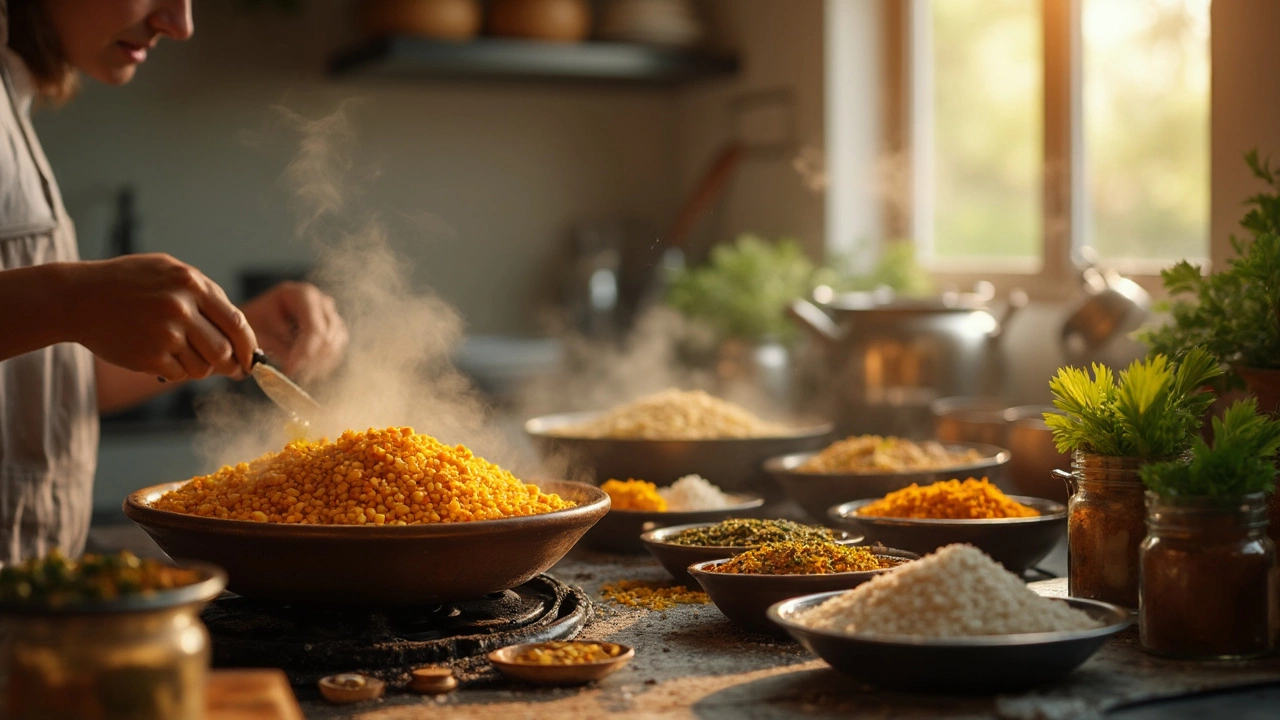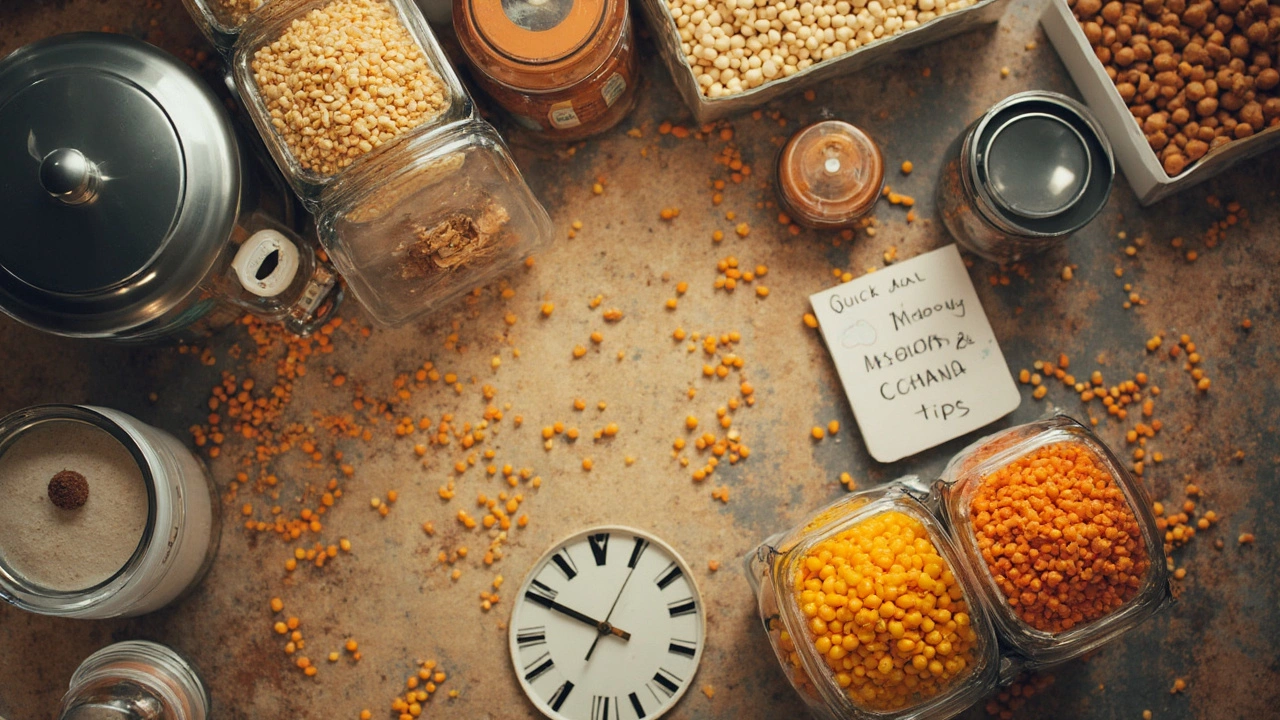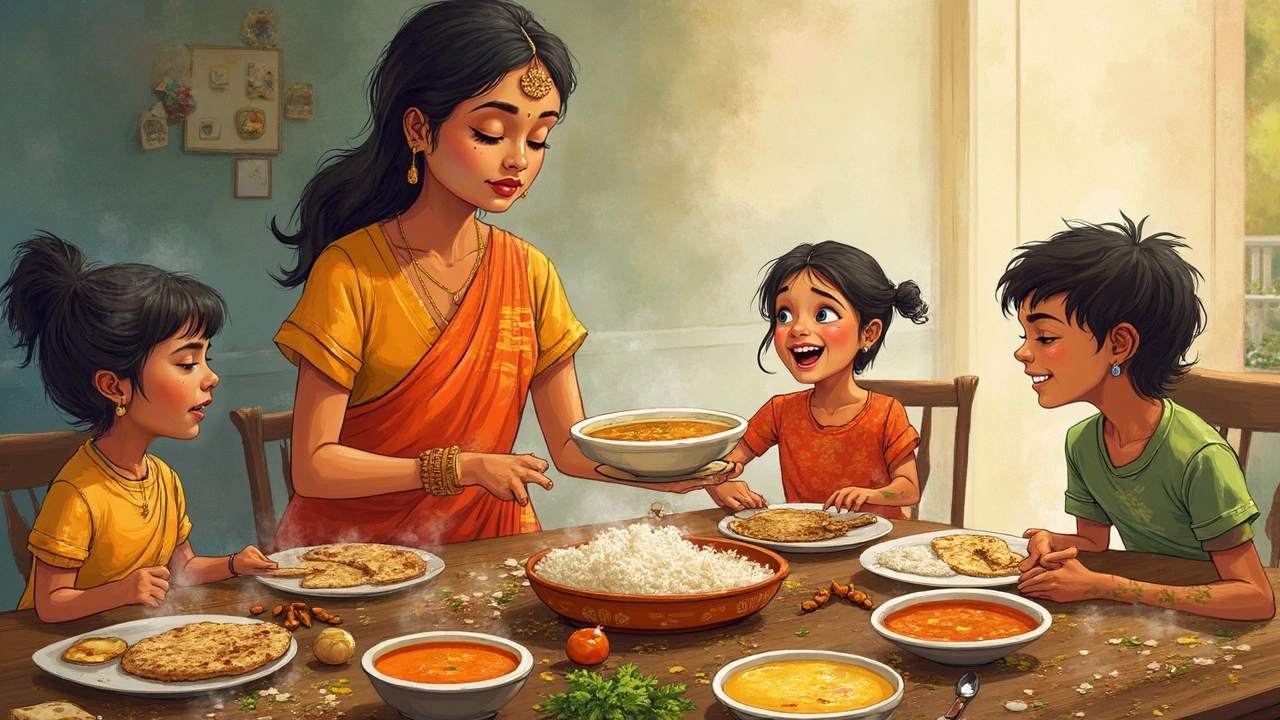Which Dal Does Not Need to Be Soaked? Quick Guide for Simple Dal Recipes
 May, 13 2025
May, 13 2025
When you get a sudden craving for dal but realize you forgot to soak it overnight, don’t panic. Not every dal needs soaking—some types can head straight for the pot, saving you loads of time.
The main hero here? Split moong dal, often called yellow moong or moong dal dhuli. This dal is already hulled and split, so it cooks fast and soft even if you drop it right into boiling water. It’s perfect for busy evenings or when you want comfort food without a long prep or planning ahead. You’ll have a warm bowl on the table in about 20-30 minutes.
Red lentils (masoor dal) are another lifesaver. Sure, soaking helps speed things up for bigger dals like chana dal or whole urad, but with moong and masoor, you just rinse and go. This makes them ideal if you get home late, have unexpected guests, or just don’t want to do more dishes. Trust me, I’ve been there, dog by my side, looking for shortcuts without losing out on taste or nutrition.
- Why Do Most Dals Need Soaking?
- Which Dal Skips the Soaking Step?
- Benefits of Cooking No-Soak Dals
- How to Make Dal Fast—Tips and Tricks
- What Else Makes Dal Cooking Easier?
Why Do Most Dals Need Soaking?
If you’ve ever stared at a packet of dal and wondered why recipes keep telling you to soak it first, you’re not alone. Most dals (especially the larger whole ones like chana dal, urad dal, and whole masoor) are dense and have tough skins that act like armor. Soaking helps break this down, so you aren’t stuck at the stove forever, waiting for the dal to go soft. It’s not just about saving time, though—soaking does a few other handy things for your dal dishes.
- dal recipe simple cooks quicker when you soak the dal, sometimes shaving off 30% or more of the usual cooking time.
- Soaking helps even out the cooking, so each grain gets tender at the same pace. No more random hard bites in your curry!
- The process also makes dals easier to digest for most people, as soaking reduces certain compounds (like phytic acid) that can cause gut issues.
Check out how much soaking can change the cooking time for different dals:
| Dal Type | Cooking Time (Unsoaked) | Cooking Time (Soaked) |
|---|---|---|
| Chana Dal | 45-60 min | 25-30 min |
| Whole Urad Dal | 60-75 min | 35-40 min |
| Masoor Dal (whole) | 40 min | 20-25 min |
| Moong Dal (split, no skin) | 20-25 min | 15-20 min |
Another cool fact—soaking can cut down the bloating or discomfort that sometimes comes with eating dal. By letting split dals sit in water for a couple of hours, you actually help your stomach out later on. That’s especially important if you’re serving dal to kids or folks who aren’t used to eating a lot of legumes.
Bottom line: soaking is like prepping your dals for a smoother, faster, and more comfortable cooking (and eating) experience.
Which Dal Skips the Soaking Step?
Let’s get straight to it: if you want to skip the soaking and save time, reach for split yellow moong dal or red masoor dal. These two are the go-to choices when you're after instant satisfaction without all the prep.
Moong dal (the peeled and split kind, which looks bright yellow) cooks fast because the hard outer skin is already removed and the dal is split into two. It softens up in just about 15-20 minutes on the stove, even less in a pressure cooker. No soaking needed. This is the dal I pick when I’m hungry and my dog Max is staring at me for his evening walk—fast, filling, and easy to flavor.
Red lentils, or masoor dal, fall into the same category. Peeled and split red lentils turn yellow/orange as they cook and don’t need any soaking before you cook them. They usually get tender in 15-20 minutes, sometimes less, and are super forgiving. Even if you forget about them for a bit, they won’t turn grainy or tough.
- Split moong dal (yellow moong)
- Red lentils (split masoor dal)
Other dals, like chana dal (split chickpeas), whole urad (black gram), or toor dal (pigeon peas), can take forever to soften if you skip soaking—think 45 minutes or more, and they might still be hard. That’s why for a dal recipe simple, you’re better off with moong or masoor.
Boiling these no-soak dals is as easy as rinsing them a couple times to get rid of dust and extra starch, tossing them into a pot, and pouring in water. You can cook them straight or add spices right from the start. You’ll know it’s ready when the grains break apart easily with a spoon. No fancy prep, no waiting around—just simple, home-style dal fast.

Benefits of Cooking No-Soak Dals
First off, cooking dals that skip the soaking step is a total time-saver. No setting reminders or shuffling your dinner plans because you forgot to soak something this morning. Split moong dal and red lentils go straight from the jar to your pan, making them super handy for quick weekday dinners or those days when you’ve just run out of patience.
There’s another major win: no-soak dals tend to be easy to digest. Since splitting hulled dals like moong gets rid of most of the tough outer skin, they’re gentler on your stomach. That’s why moong dal is what most Indian households dish out to kids, the elderly, or anyone on the mend from illness.
Here’s what the nutritionist Priya Naik once told dal recipe simple fans during a live session:
"Split dals like moong and masoor offer good protein and cook quickly, making them ideal for people with busy schedules and sensitive digestion."
If time is money, check out how these dals stack up:
| Dal Variety | Soaking Needed? | Average Cooking Time (minutes) |
|---|---|---|
| Moong Dal (split, yellow) | No | 15-20 |
| Red Lentils (masoor dal) | No | 15-20 |
| Chana Dal | Yes | 35-40 |
| Whole Urad Dal | Yes | 45-60 |
No-soak dals also need less energy for cooking since you’re not softening up tough skins or dense beans. That means lower gas or electricity bills, especially if dal is a staple in your house. And if you’re always running out of fridge space, these dals are easier to batch-cook and store since they stay soft and reheat well with just a splash of water.
Here’s a quick rundown of why no-soak dals are worth your attention:
- Ready at a moment’s notice—no planning needed
- Gentle on digestion, great for all ages
- Save on cooking fuel and kitchen time
- Easy to get the texture right, even for beginners
- Hold up well for meal prepping or leftovers
Once you get the hang of moong or masoor dal, whipping up a homemade curry isn’t just fast, it’s almost too easy. Your nightly dinner stress just drops—and there’s more time for hanging out with your dog or catching up on shows.
How to Make Dal Fast—Tips and Tricks
Got barely 30 minutes to spare and you still want that soulful bowl of dal? Here are some real life-tested tricks to save time without cutting quality. First up—the choice of lentil matters the most. Use split moong dal or red lentils for your dal recipe simple plan. They don’t just cook quicker, they make washing up faster too.
- Use a pressure cooker or instant pot: These speed-things-up gadgets will turn most split dals into soft, creamy comfort in 10-12 minutes flat. Even a stovetop pressure cooker brings down time compared to a regular pan.
- Rinse well: Always wash your dal 2-3 times until the water runs nearly clear. This gets rid of surface starches and any dust, which otherwise can make cooking longer or dal slimy.
- Cut down extra steps: For a busy day, skip elaborate tadka (tempering). You can add ginger, garlic, and your fave spices right into the boiling dal. Sizzle onions and tomatoes together at the start—they’ll flavor your dal while saving time.
- Slice veggies small: If you want to sneak in some spinach, carrots, or tomato, chop them fine. Small pieces cook through much faster.
- Hot water helps: Start cooking with hot or boiling water from the kettle (not cold tap). It shaves a few minutes off cook time and helps the dal break down evenly.
Some folks also swear by adding a pinch of baking soda—just a tiny bit (1/8 teaspoon for one cup dal)—to speed up the softening. Don’t overdo it, though, or it’ll change the flavor and color.
Want to see how much time you save with pressure cookers versus stovetop pans? Here’s real data from a kitchen test:
| Dal Type | Cooker Time | Pot Time |
|---|---|---|
| Yellow Moong Dal | 7-10 min | 25-30 min |
| Red Lentils (Masoor) | 10 min | 20-25 min |
| Chana Dal (soaked) | 20 min | 45-60 min |
Bonus tip? Batch-cook your dal for the week. Store in the fridge, and it’s easy to just heat with fresh tadka or chopped herbs for a quick lunch or dinner. That’s how you make a simple dal recipe work even on your busiest days.

What Else Makes Dal Cooking Easier?
Alright, so we’ve nailed down which dal doesn’t need soaking. But let’s talk about little hacks that make your dal recipe simple from start to finish, no matter what type you cook. Small changes in your routine can shave off minutes and boost flavor.
- Use a pressure cooker or Instant Pot. This one is a game-changer. Even stubborn dals like chana or toor can be done in under 30 minutes instead of an hour. Moong and masoor dal turn soft in about 10 minutes with pressure cooking. It’s about speed and perfectly creamy texture every time.
- Keep basic tadka ingredients ready. Chop some onion, garlic, ginger, and green chilies ahead. Store them in little containers in the fridge. When you’re about to cook, the groundwork is already set, which means less mess and less stress.
- Buy pre-cleaned and split dals. Whole dals take longer to cook and sometimes need extra cleaning and sorting. Split dals, especially the small ones, are sold cleaned and sometimes even slightly roasted, lowering cook time.
- Double the batch. Make extra dal and store the rest in the fridge or freezer. Dal freezes really well, and all you need to do is add a splash of water when reheating. Great for days when you’re exhausted or when lunch is at 4 pm because you forgot to cook.
- Try flavored oils or ghee in tadka. If you want big taste without extra steps, heat mustard oil, coconut oil, or ghee with your basic spices. Even a plain dal tastes amazing with a strong tadka poured on top before serving.
Check this little cheat sheet to see roughly how cook times change when you switch up equipment:
| Dal Type | Open Pot (Mins) | Pressure Cooker (Mins) | Instant Pot (Mins) |
|---|---|---|---|
| Moong Dal (split) | 25-30 | 7-10 | 8 |
| Masoor Dal (red) | 20-25 | 5-8 | 6 |
| Toor Dal (split) | 45-60 | 15-20 | 16 |
| Chana Dal (split) | 60-75 | 20-25 | 25 |
If you ever get stuck deciding what dal to make, stick with the smaller splits. Less waiting, more eating—Max approves.
